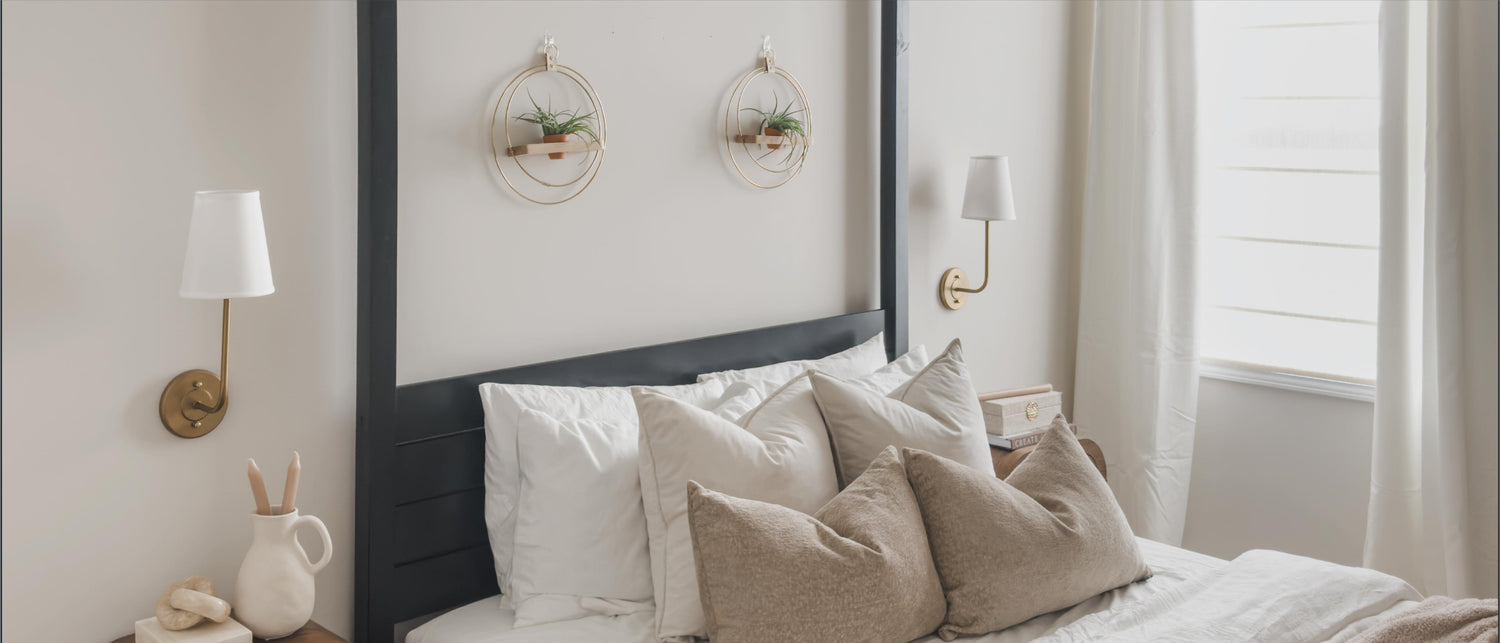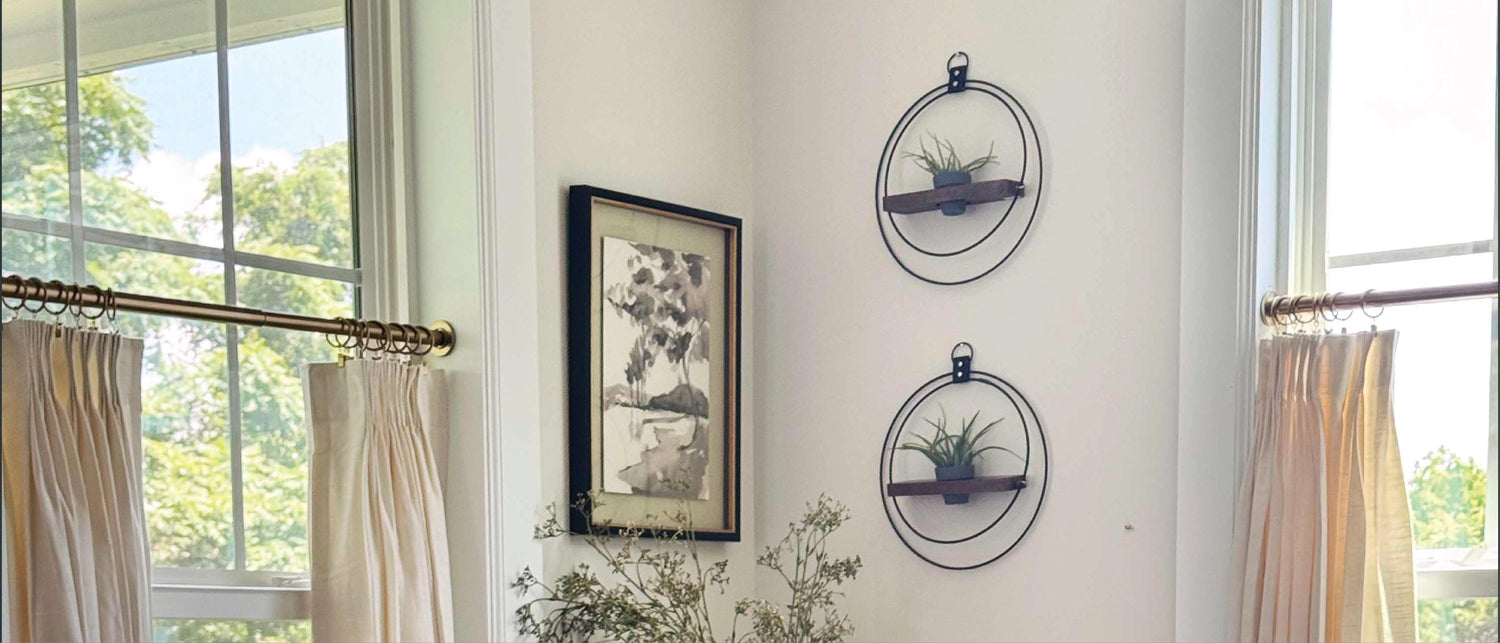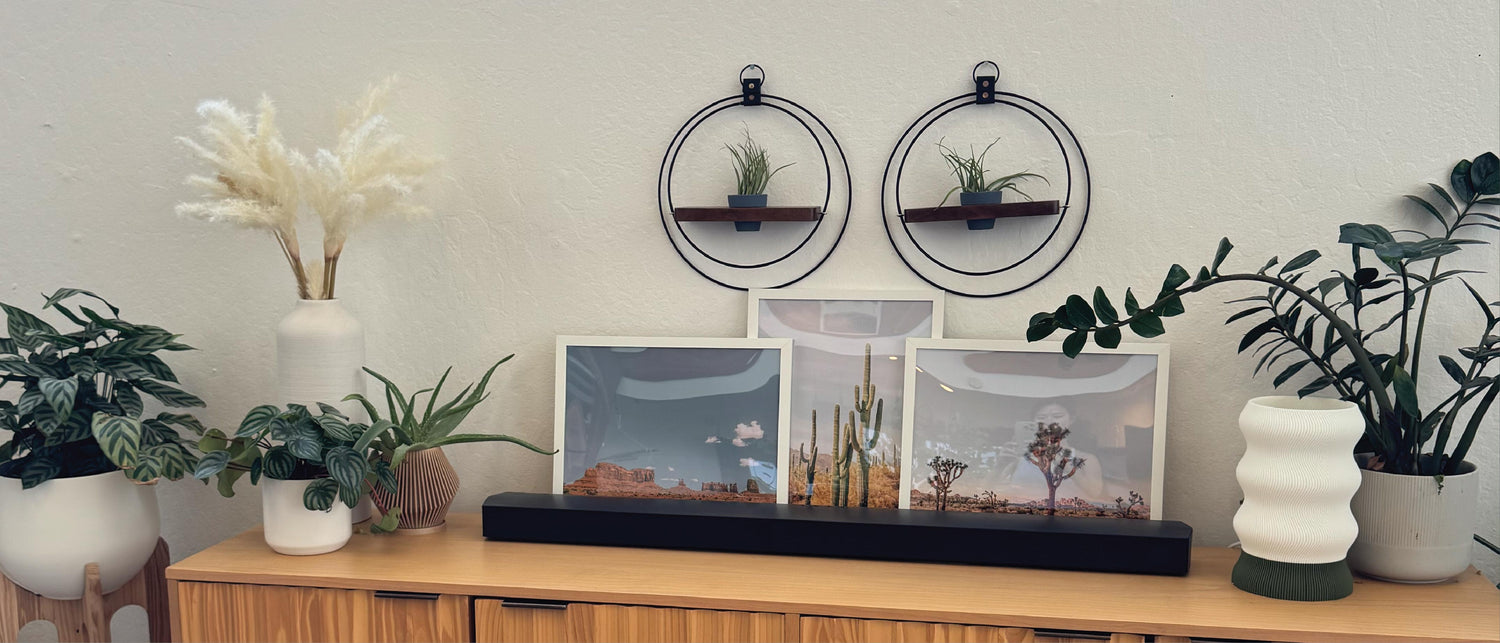
In order to keep your indoor plants healthy and thriving, good drainage is absolutely crucial. Some plants don’t need a ton of drainage to survive, but if you’re a good plant parent you’ll want to ensure your pots and planters have some form of drainage. Check out this blog post if you want to learn more about drainage and hanging plants.
Most indoor planters will come with a drainage hole but if they don’t were giving you all the tips and tricks to ensure proper drainage for your houseplants.
Let’s start with the mini takeaway first then we can head into more details.
What To Add To The Bottom of Indoor Planters

Packing Materials
With home deliveries always increasing we have a wealth of packing materials that need recycling. Use them at the bottom of your planters!
Coffee Filters
Coffee filters are a great solution to support drainage and keep the soil from flowing out of the bottom of your planter.
Natural Materials
Go on a nature walk and you'll find lots of useful natural materials to aid in drainage for your indoor plants. Pine cones & acorns work great and we've got more ideas down below too so keep reading!

Pea-Gravel
Great for drainage but will also help stop soil from flowing out of the bottom of drainage holes.
Clay Balls
Used to support healthy plant growth. Add to potting mixes for indoor plants. Clay balls are very porous and used regularly when growing hydroponically.
Vermiculite
This stuff is pretty amazing, not only does it have excellent water retaining abilities but it can do a lot more for your indoor plants. Keep reading below for more info.

Perlite Granuals
Created when volcanic rock is heated to very high temps, perlite works great to keep drainage at its best for all your houseplants.
Sand
Did you know that sand grains do not retain or hold onto water? Sand is perfect for use in the bottom of indoor planters to help with drainage.

Recycled Plastics
Any type of recycled plastic works well. Soda or water bottles, juice, and milk jugs. You can even use grocery bags to line your indoor planters before adding the soil.
Why Potted Indoor Plants Need Good Drainage
The same as humans, our plant friends are sensitive to excess moisture. Healthy plants need to have a healthy root system. Sitting in a pool of water can cause problems such as root rot and other types of fungus.

Shop Braid & Wood's Modern Plant Stand Collection. Shop Now!
Stagnant water that hasn’t drained away properly can make these problems worse and are simply not good for your indoor plants.
When plants grow outdoors in your yard there is a natural drainage system in the earth that pulls water away from the roots of the plant. Water doesn’t pool and collect underneath the root system.
This isn’t the case for potted indoor plants, there really isn’t any place for the water to flow away from the root system and this is why it’s so important to ensure your pots have some type of drainage.
So before we find out what you can put in indoor planters to aid drainage, let’s find out if some pots are better designed to wick away excess moisture than others.
Sitting in a pool of water can cause problems such as root rot and other types of fungus.
Material Matters When It Comes To Indoor Planters & Drainage
The material that the pot is made out of can make a considerable difference to its drainage ability.
We all know how easy it is to fall in love with a beautiful pot that doesn’t have a drainage hole. Here are two easy drainage solutions if that happens to you:
- Keep the Plant In Its Grow Pot – remove the grow pot from your decorative planter, thoroughly water the plant, and then place it back in the decorative vessel once the plant has stopped draining.
- Use Terracotta – Pot your houseplant in a terracotta planter first and then place it in the decorative vessel. Terracotta is extremely porous and will help wick away excess moisture from the soil. That way you can enjoy your beautiful pot and keep your plants well-drained!
The material that the pot can make a considerable difference to its drainage ability.
Increase The Drainage of Your Indoor Plants With These Materials
Let's dig in a bit more to the types of materials to add to the bottom of your indoor planters in order to increase drainage and keep your houseplants healthy.

1. Recycled Plastics
The amount of plastics in landfills is growing year over year. A shocking report from The U.S Department of Energy estimates that a staggering 44 million metric tons of plastic were added to landfills in 2019.
Any type of recycled plastic works well. Soda or water bottles, juice, and milk jugs. You can even use grocery bags to line your indoor planters before adding the soil.
2. Packing Materials
With home deliveries increasing we always have a wealth of packing materials needing recycling. Give them a new home at the bottom of your planter to help regulate drainage.
Styrofoam peanuts are a perfect solution. Make sure you choose the type that doesn’t dissolve in water.
3. Coffee Filters
Although your planters might have drainage holes, it can be a challenge when watering keeps washing the soil through the holes. Coffee filters are a great solution to support drainage and keep the soil from flowing out of the bottom of your planter.
A length of cheesecloth is also a good solution for the bottom of a planter or a nut milk bag.
4. Natural Materials
When you are out on a nature walk you might find lots of useful natural materials to aid drainage.
Natural materials are a win in sustainability game and we’ll give you extra points for foraging!
Here are a few natural materials to put in the bottom of your planter to aid drainage:
- Pine cones & acorns
- Chips of wood
- Broken sticks
- Leaves
- River rocks
- Tree bark
When you are out on a nature walk you might find lots of useful natural materials to aid drainage.
5. Perlite
Perlite is a white and extremely porous material that is created when volcanic rock is heated to a very high temperature.
The high temperatures encourage the water contained in the perlite to expand the rock in a similar way to popcorn. You can buy it in different sizes from 3 - 6 mm in diameter.
It's a very common drainage material used by professional growers and in homes. It’s often used in planters in greenhouses and for propagating seedlings in nurseries.
6. Vermiculite
Another extremely porous material is vermiculite.
Similar to perlite, vermiculite expands almost like an accordion when met with water and has excellent water retaining abilities.
Vermiculite looks like glossy flakes and can be found in a range of colors from a very dark gray to light brown.
It’s available in four different grades with 4 being the finest.
If vermiculite used regularly, it will not only increase the moisture in the soil but it will also help the soil retain nutrients. The coarser grades are good for the bottom of indoor planters, whereas the finer grades are perfect for germination.
“If it’s used regularly, it will not only increase moisture in the soil but also helps to retain nutrients.”
7. Sand
Sand is one of the main properties of any type of soil. The grains do not retain or hold onto water, so they are perfect for use in the bottom of indoor planters to aid in drainage.
Sand often used by professional growers and is usually mixed in within greenhouse and nursery growing mixes.
Sand can be used to help fill extremely large planters. Add sand first and then finish with soil. It’s cheaper that way.
“Sand does not retain or hold onto water, so it’s perfect for use in the bottom of indoor planters”
8. Pea-Gravel
This is the type of gravel is often used in aquariums. Pea-Gravel is comprised of small round pebbles that are the size of peas (hence its name).
Pea-Gravel is shaped naturally by running water, like a stream or a river.
This type of gravel will also help stop soil flowing out of the bottom of drainage holes.
9. Clay Balls
These are used regularly when growing hydroponically as they are very porous. Clay balls can be used to support healthy plant growth in potting mixes in indoor planters.
Add a 4 cm layer to the bottom of the pot before adding potting or compost mix.
10. Gravel
Historically this was the go-to material for anyone growing indoor plants in decorative planters. However recently many gardeners are debunking this. It’s been found that by adding it directly underneath the soil layer, it causes water to collect directly above it.
What To Put In The Bottom of Indoor Planter for Drainage - More Help
We hope this has answered the question of what you can put in the bottom of indoor planters around your home if you want to ensure they have great drainage. Now you can worry less about root rot issues and focus on just enjoying your fabulous foliage.
Looking For A New Plant Stand for Your Houseplant?
Be sure to check out our collection of modern solid wood plant stands to take your indoor plant styling from basic to beautiful.
Shop our Arches Plant Stand! A don't worry the included spun aluminum vessel is complete with a drainage hole and plug! Check out the store now.






2 comments
Thank you for the advice. I most certainly will use the rock and leave combo.
This article was so helpful in regards to what I can use in the bottom of my house plants . I’ve been doin it wrong for years. I’ve only used rocks,
.I will say most of my plants have done well in spite of using rocks versus the other suggestions that are made here.